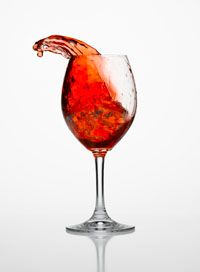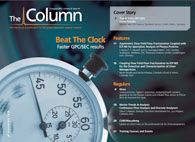Fine wine?
A team of scientists has performed a series of analyses on three sets of Spanish red wine to see how price affects aroma chemical composition.

A team of scientists has performed a series of analyses on three sets of Spanish red wine to see how price affects aroma chemical composition.1 The wines were from different price ranges and were studied using a range of gas chromatography methods. Differences were found in the levels of 72 aroma compounds.
The most expensive wines had a higher content of wood-related compounds, ethyl phenols, cysteinil-derived mercaptans, volatile sulphur compounds, ethyl esters of branched acids, methional and phenylacetaldehyde and were low in linear and branched fatty acids, fusel alcohols, terpenols, norisoprenoids, fusel alcohol acetates and ethyl esters of the linear fatty acids.
The inexpensive wines displayed exactly the opposite attributes, and were highest in E-2-nonenal, E-2-hexenal, Z-3-hexenol, acetoin and ethyl lactate.
The expensive and medium-price wines could be categorized exclusively by odorant composition. However, the lowest-price wine also had to be acknowledged by taste as well.
The team concluded that the models for quality reveal a common structure, but that ultimately they are characteristic of a given sample set.
1. Ana Escudero et al., Journal of Agricultural and Food Chemistry60,5045–5056 (2012).
This story originally appeared in The Column. Click here to view that issue.

Common Challenges in Nitrosamine Analysis: An LCGC International Peer Exchange
April 15th 2025A recent roundtable discussion featuring Aloka Srinivasan of Raaha, Mayank Bhanti of the United States Pharmacopeia (USP), and Amber Burch of Purisys discussed the challenges surrounding nitrosamine analysis in pharmaceuticals.
Extracting Estrogenic Hormones Using Rotating Disk and Modified Clays
April 14th 2025University of Caldas and University of Chile researchers extracted estrogenic hormones from wastewater samples using rotating disk sorption extraction. After extraction, the concentrated analytes were measured using liquid chromatography coupled with photodiode array detection (HPLC-PDA).










